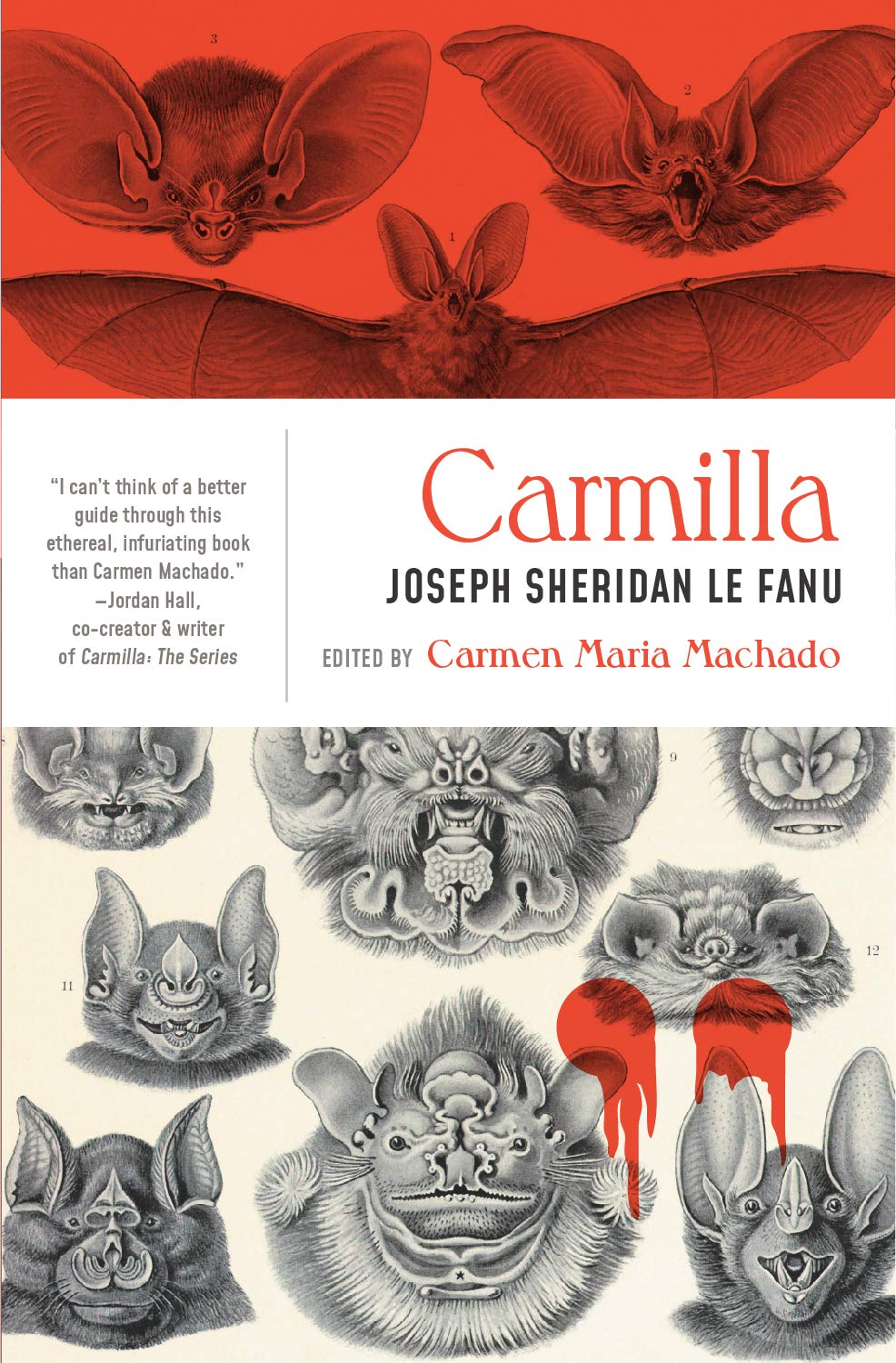Review of Carmilla by Joseph Sheridan Le Fanu, edited by Carmen Maria Machado

Carmilla
Joseph Sheridan Le Fanu, edited by Carmen Maria Machado
Lanternfish Press, 2019, 160 pages
$17.00
Originally published in The Dark Blue, 1871-1872, 139 pages
Reviewed by Chloe Weber
You may be familiar with the “lesbian vampire” narrative, one repeated in numerous books, films, and other forms of media. But from where did this narrative originate? Many argue that Carmilla by Joseph Sheridan Le Fanu set the stage for many of the lesbian and sapphic vampires we see today.
Carmilla, originally published as a serial in the London-based literary magazine The Dark Blue and later reprinted by Le Fanu in In A Glass Darkly (1872), predates its more famous counterpart, Dracula, by over twenty years. This novel is set in nineteenth-century Styria, a federal state of Austria, and follows teen protagonist Laura as she becomes acquainted with a strange new houseguest, Carmilla.
However, before the story begins, in the prologue of Carmilla, we learn that Laura has already passed away. This story is recounted as a case study by a man named Doctor Hesselius, who claims he corresponded with Laura, where she spoke in detail about her experiences with the vampire Carmilla. This correspondence was long presumed fictional until 1973, when Dr. Jane Leight uncovered within LeFanu’s study a stack of correspondence between a doctor and a woman called only “V.”
If we assume Laura and Doctor Hesselius are real, what of the vampire Carmilla, and what of the obviously queer relationship between the two women? Most scholars would say the lesbianism of Laura and Carmilla is no fiction. In fact, the letters written by V. are said to contain even more detail of her desire for Carmilla than what made it into Le Fanu’s manuscript. The truth is much more devastating: Carmilla is a story about “a young woman’s sexual awakening; [and] the senseless slaughter of her supposed defiler” (Carmen Maria Machado, vi).
Going into the novel with these considerations, I found Carmilla read less like a gothic horror and more like a story about queerness itself, with lesbianism as the focus. Carmilla lays her claim on Laura only moments after their first meeting, seeing it as fate bringing them together once more, as they both recall a shared “dream” of meeting as children. What follows is a tale in which Laura attempts to resist Carmilla’s various charms and claims on her life, brushing off her declarations of love as simple hysteria. Laura prefers to view Carmilla’s love as part of her weak countenance rather than accept her lesbianism. Carmilla experiences hours of apathy followed by ones of intense love, which she inflicts upon Laura, saying, “You are mine, you shall be mine, you and I are one forever.” Laura describes the behavior, “like the ardor of a lover; it embarrassed me…” (37).
Laura’s eventual sexual awakening towards Carmilla comes when she is pierced in the breast by a beastly figure, later revealed to be Carmilla in a vampiric form. Following this strange occurrence, Laura believes her health is declining rapidly, and she describes attraction towards Carmilla as one of her primary symptoms. Laura even describes an orgasm experienced in a dreamlike state as she imagines sensations of a woman kissing up to her throat (69).
The only solution to Laura’s afflicted state is to eliminate the source of her woes, as she discovers evidence that Carmilla is actually an immortal vampire named Millarca. Laura still longs to find Carmilla safe, despite the evidence and even as the object of her desire is staked and beheaded. This confirms that Laura’s lesbianism is not something that will go away, and it cannot be cured as if it were some malicious malady.
It is not a far-fetched assumption that the real Carmilla, a woman named Marcia, was not a vampire as described by V. but a simple lesbian. Thanks to Le Fanu, Marcia is immortalized as a vampiric monster rather than just a human who stole a wealthy girl’s affection.
What modern-day readers should take away from Carmilla is that their lesbianism is not a supernatural curse and that they may live freely and openly rather than live in fear of their identity. Laura’s, or V.’s, suppression of desire caused an unnatural amount of pain: it is possible that if these two women had embraced their love instead, their story might have ended differently.
Chloe Weber is a Sinister Wisdom intern for the May 2024 season, located remotely in Montclair, New Jersey. She attends Macalester College as a student of English and Anthropology, always on the hunt to expand her literary knowledge.
"Empowerment comes from ideas."
― Charlene Carruthers
"Your silence will not protect you."
— Tourmaline
"Gender is the poetry each of us makes out of the language we are taught."
— Leila Raven


